Chicago’s Navy Pier is famous for Ferris wheels, lakefront views, and… ghostly music that plays with no power? Visitors flock here for rides and food, but beneath the fun lies a layered history that fuels spooky tales and curious travelers. This article explores ten pieces of Chicago history and pier lore that might explain the eerie melodies rumored to drift along the lake. Ready to stroll the boardwalk, snap photos, and listen for echoes of the past?
Training Ground Tensions: WWI and WWII
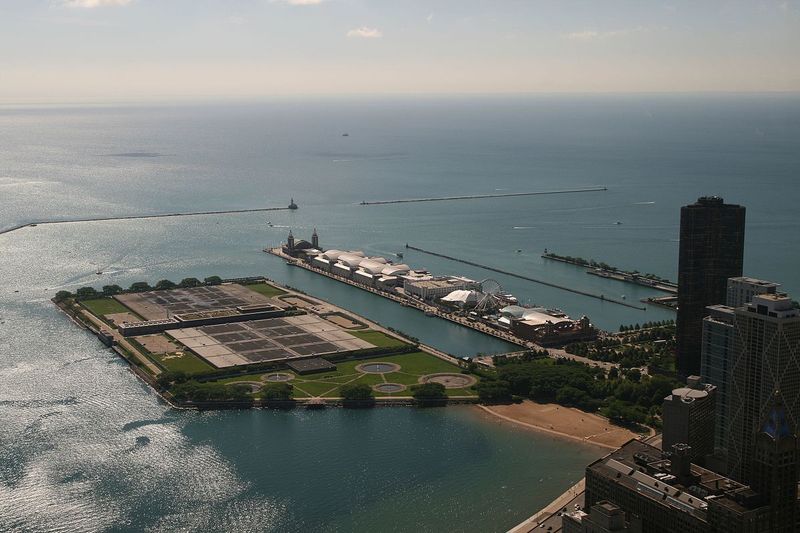
During its early years as a military training center, the pier hosted drills, ships, and pilots practicing carrier landings on the lake. Wartime pressure imprinted the site with urgency – and occasional tragedy – making it fertile ground for ghost stories. Standing near the outer promenade, imagine the thunder of engines and boots where music now drifts from cafés.
The contrast can feel uncanny at dusk, when gulls cry like distant bugles. Travelers can spot memorial plaques and exhibits nodding to these eras; they’re sobering, but they also clarify the lore. Legends claim soldiers’ footsteps echo in corridors on still nights. Whether myth or metaphor, the military chapter explains why the pier’s vibrations seem intense.
Take a slow walk toward the end of the pier, listening for rhythmic clangs that might be wind, waves – and your imagination tuning the past.
Layers of History, Layers of Echoes
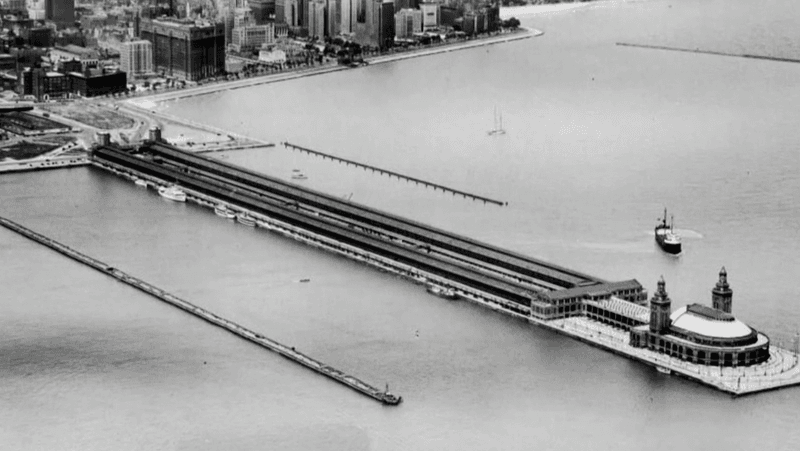
One reason the pier feels haunted is simple: history stacks up like fog over Lake Michigan. Navy Pier has worn many identities – industrial workhorse, military training ground, student hub, and pleasure pier – each leaving traces in brick, steel, and memory. Travelers today should linger by the quieter edges near the gardens and lookout points, where wind funnels through railings with an organ-like hum.
Guides love to say sound carries secrets; that’s a romantic notion, but history does “speak” through context. If you’re chasing legends, arrive at golden hour, when the light gilds the water and amplifies creaks and footsteps. Plaques scattered along the pier offer factual anchors, creating a scavenger hunt through time.
Whether or not music plays without power, the setting primes your senses, making ordinary sounds feel beautifully uncanny.
The Eastland Disaster and Morgue Myth
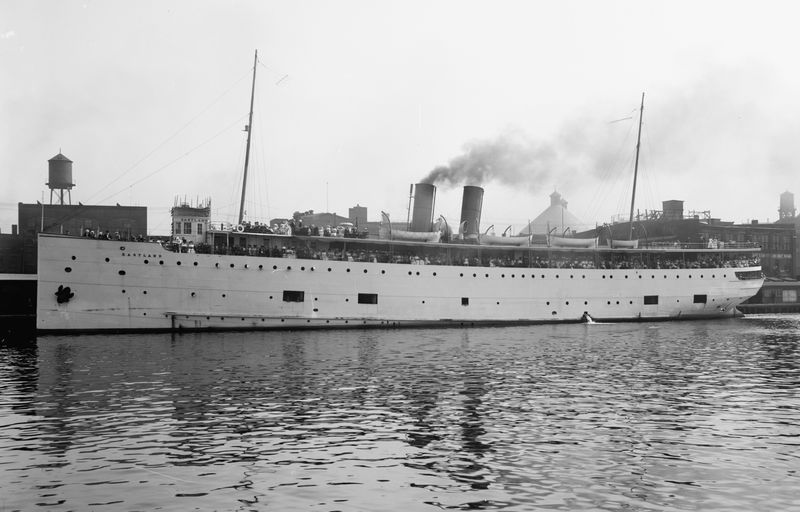
Legend has it parts of the pier were used as a temporary morgue after the 1915 Eastland disaster, when a passenger ship capsized on the Chicago River. Historians debate specifics, but the story persists, feeding whispers of mournful music with no source.
Travelers exploring nearby Riverwalk plaques can connect timelines, then head back to the pier with fresh context. The myth survives because it makes emotional sense – tragedy seeks a stage for remembrance. At quieter hours, the wind can sound like a hymn under the pavilion rafters. Even skeptics admit the pier’s long corridors invite somber reflection.
If you’re touring, pair a river history stop with a pier sunset stroll. The narrative throughline – loss, resilience, renewal – explains why visitors feel a hush here, as if the lake itself keeps time to a respectful, unseen metronome.
A Floating University, Minds at the Water’s Edge
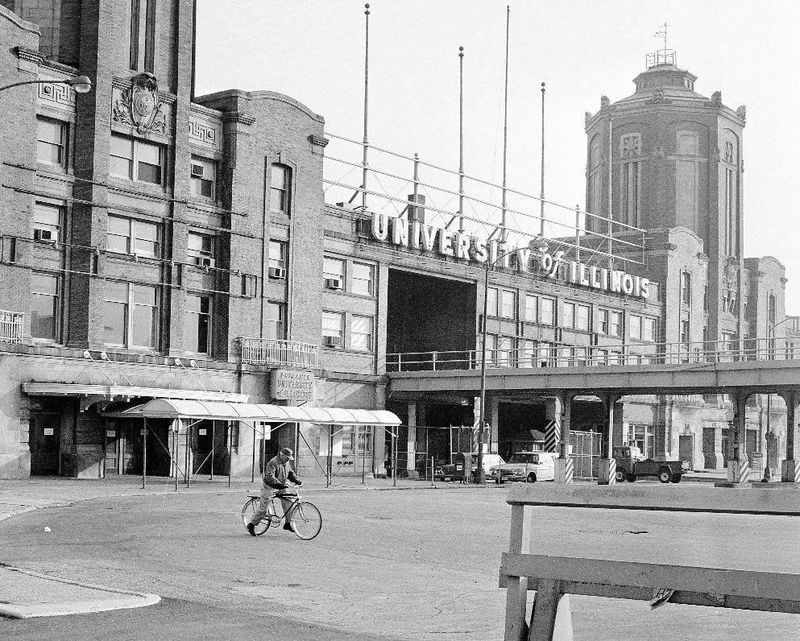
Another intriguing detail: after WWII, Navy Pier served as a University of Illinois satellite campus, buzzing with veterans and new beginnings. Imagine lecture notes rustling where carousel music now plays, and typewriters clacking where waves slap pilings. That academic energy lingers in the architecture – long corridors, practical facades, and repurposed rooms.
Travelers can look for interpretive signs and old photos that anchor the campus story. The “phantom music” might be a metaphor for memory – less a haunting, more a chorus of past voices learning and living by the lake. Stand near the Family Pavilion and read the historic panels; the juxtaposition turns the pier into an open-air museum.
As twilight falls, the building frames resonate with footsteps and chatter. If music seems to swell from nowhere, it could be the echo of campus days set to the rhythm of Lake Michigan.
When the Lights Dimmed: Decades of Disuse

Once the crowds faded in the 1970s–80s, large stretches of the pier sat quiet and underused. Empty spaces magnify every creak, so rumors grew of music that played with no power and doors that sighed open on their own. Urban explorers of the era remember rust, puddled floors, and wind that howled through gaps like a pipe organ.
Today’s visitors can trace remnants of the industrial skeleton – girders, rivets, and catwalk lines – amid polished storefronts. It’s easy to see how an abandoned ambiance birthed eerie stories. For a safe taste of that mood, walk the outer deck on breezy evenings; listen where the railing meets the wind.
Even with modern lights, the bones of the structure compose their own soundtrack. Photography tip: capture long exposures to turn restless water and swaying lights into spectral smears.
Pre-Renovation Creep Factor
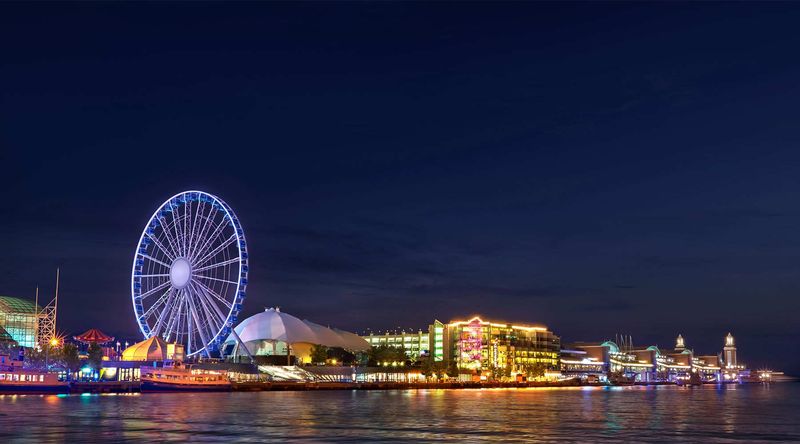
Before the 1995 makeover, the pier’s cavernous halls, dim bulbs, and echoing corridors made it a magnet for spooky impressions. Visitors reported distant melodies drifting from shuttered rooms – a classic case of wind resonance and imagination. Even now, you can sense those bones beneath the bright attractions.
Seek out transitional zones where glass meets steel, especially on cooler nights when the temperature drop sharpens sound. The creepiness isn’t malevolent; it’s cinematic, like wandering through a set between scenes. Travelers can anchor the vibe with a hot chocolate from a kiosk and stroll the less-crowded stretches past the wheel.
If you’re hunting “music with no power,” pause by doorways that frame the lake; the hollow spaces hum. It’s the city’s theater of acoustics, starring gusts, gulls, and stories people keep retelling.
Storytellers and the Soundtrack of Rumor

One reason the legend thrives is Chicago’s knack for storytelling. Layered urban legends – ghostly workers, spectral sailors, phantom orchestras – travel by word of mouth, tours, and late-night posts. Walk with a local guide and you’ll hear how the lake amplifies stray notes from events, boats, and street performers.
Sometimes, music actually drifts from farther along the shoreline, refracted by wind and water. Travelers can test this by moving a few yards along the deck and noticing how the sound shifts. The city’s skyline becomes a hall of mirrors for noise, bending it into the uncanny.
Add a well-timed gull cry, and voilà: haunted soundtrack. Whether you believe or not, the tales make evening strolls feel like radio tuning. Bring curiosity, a light jacket, and your best listening ears.
The Phantom Playlist: Music With No Power

Here’s the headline myth: music rising from empty corners when no speakers are on. Explanations range from resonant railings to far-off bandstands bouncing sound off water and glass. Inside corridors can act like flutes, especially on gusty nights, producing tones that feel melodic.
Travelers can experiment: stop under overhangs, near stairwells, or beside metal grates when wind picks up. You might catch a note that seems deliberate. If a show is underway at the pier or nearby venues, stray chords may surf the breeze. The fun is in the hunt – no ghosts required. But if you’re inclined toward the paranormal, the mystery is delightful.
Snap a short video and note wind direction, then compare spots. Whether acoustic quirk or spectral symphony, the pier’s nighttime soundscape makes the myth feel wonderfully plausible.
Renovation, Preservation, and Memory
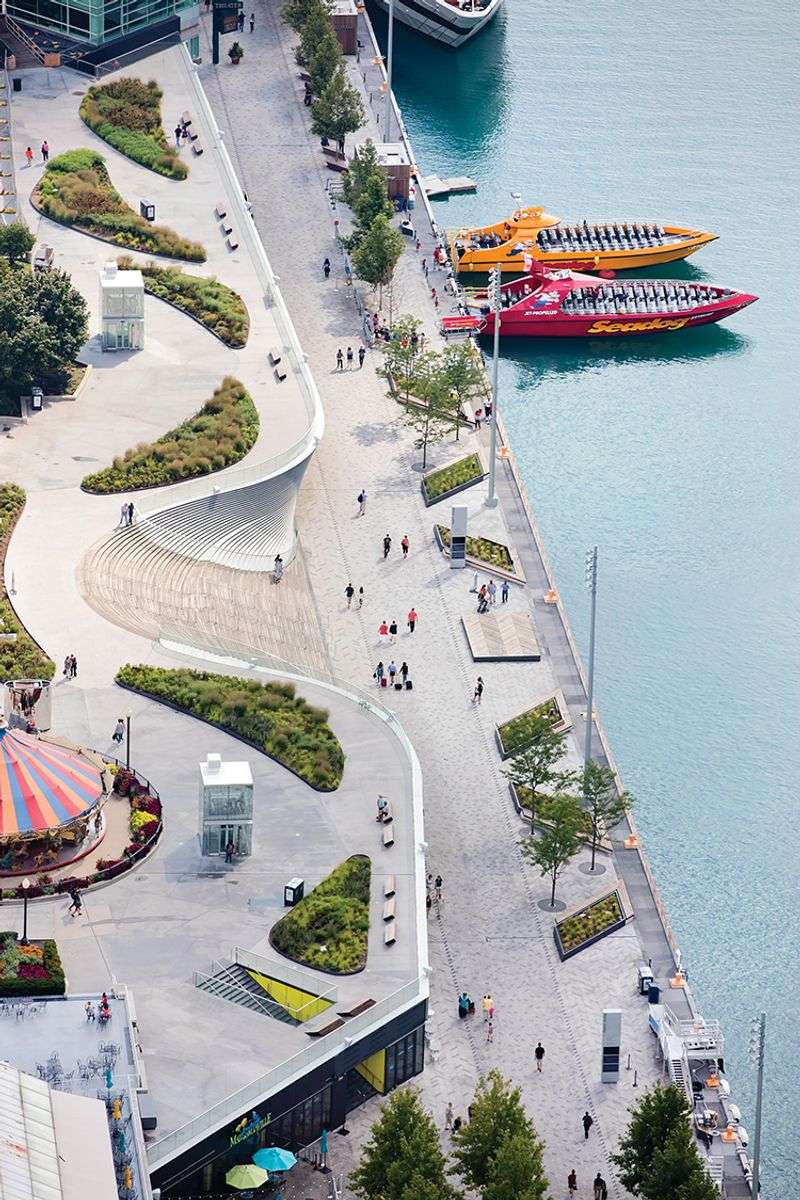
Another key factor is the 1995 restoration, which polished the pier without erasing its industrial lineage. The result: a living museum where bright attractions coexist with stalwart beams and echo-friendly corridors. Memory thrives in preserved materials, and storytellers leverage that contrast to keep legends fresh.
Travelers should look for interpretive panels and original structural elements – perfect backdrops for reflective photos. Notice how modern speakers, when off, leave a hush that makes old acoustics noticeable. It’s a stage set for your senses, where the lake supplies percussion and the wind carries melody.
If you hear something odd, jot the location; returning later may reveal how sound rebounds differently. Renovation didn’t banish the past – it framed it, inviting you to hear what you might otherwise overlook.
Chicago’s Love of Ghosts (and Good Walks)
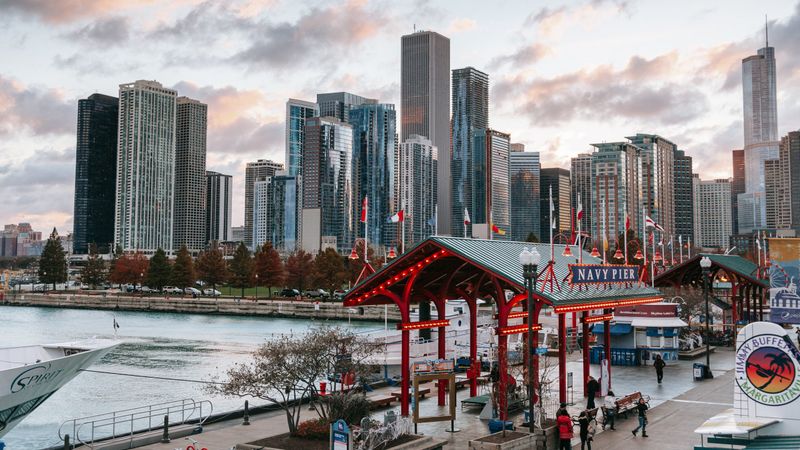
Finally, cultural fascination keeps the legend alive. Chicago relishes urban myths – from mob haunts to lighthouse whispers – and Navy Pier fits the playlist. Ghost tours, skyline cruises, and lakeside walks create fertile ground for spooky suggestion, especially after dark.
Travelers can lean in playfully: ride the Centennial Wheel, then stroll the pier’s edge to let the lake hum beneath the city’s glitter. If a chill runs by, it’s likely the breeze – but the thrill is real. Respect the space, heed posted signs, and enjoy the public art and skyline photo ops.
Whether you catch phantom notes or only seagull solos, you’ll leave with a story. That’s the city’s magic: history, spectacle, and a hint of the uncanny, rolled into one unforgettable walk by the water.
Dear Reader: This page may contain affiliate links which may earn a commission if you click through and make a purchase. Our independent journalism is not influenced by any advertiser or commercial initiative unless it is clearly marked as sponsored content. As travel products change, please be sure to reconfirm all details and stay up to date with current events to ensure a safe and successful trip.